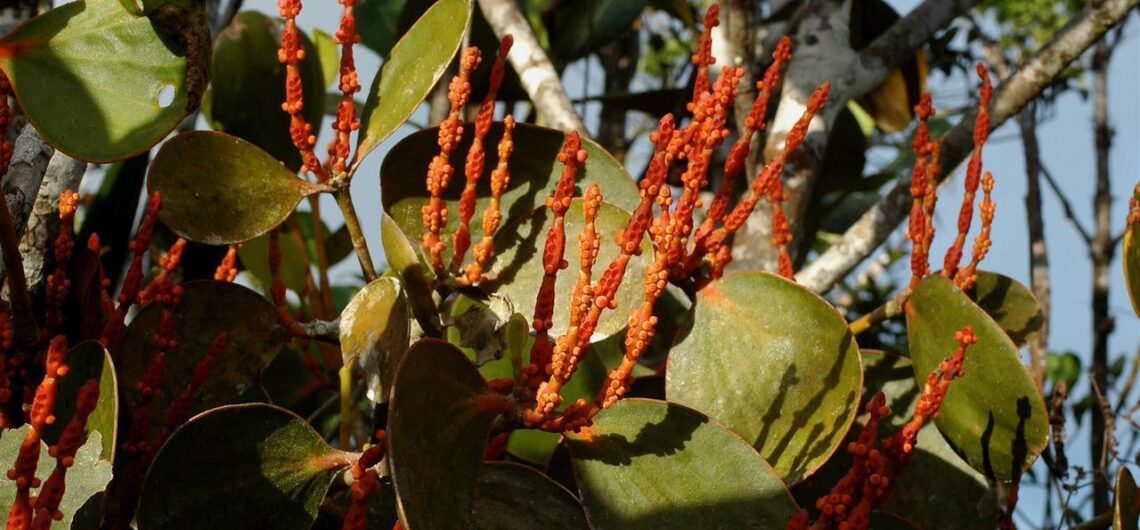Dendrophthora fortis
Although mistletoes are familiar to many for their significance in European cultures, from ancient Norse mythology to modern Christmas traditions, they reach by far their highest diversity in the tropics. Most of Europe is inhabited by only one mistletoe species (Viscum album), as is most of eastern North America (Phoradendron leucarpum). By contrast, Panama alone hosts at least 45 species, and more are continuing to be discovered. One of these species, Dendrophthora fortis, holds a special place in the Canopy Family’s heart, as it is not only endemic to Panama but was recently discovered and described by our own field biologists Jerry and Linda Harrison!
The genus Dendrophthora (Greek, “tree destruction”) contains over 125 species in total, distributed across Mexico, the Caribbean, and Central and South America, although the taxonomic details are complicated and many uncertainties remain. D. fortis (Latin, “strong”) was discovered by Jerry and Linda—along with two additional new species, D. perlicarpa and D. primaria—not far from their home in the cloudforests of Los Altos de Cerro Azul, in the foothills of Cerro Jefe. A formal species description was published in 2015. D. fortis has subsequently been observed in additional nearby locations at Cerro Jefe, which is well known for hosting many localized cloudforest species (and is a popular day-trip birding destination from the Canopy Tower). Otherwise this species is known to occur in only one other population, at El Valle de Antón in Coclé (home of the Canopy Lodge).
Mistletoes, in general, are plant parasites from multiple taxa that survive primarily by extracting water and nutrients from their host plant. Over time mistletoe parasitism may stunt or even kill host trees—hence the genus name Dendrophthora, “tree destruction.” D. fortis has been observed parasitizing small Clusia trees that are very common in the Cerro Jefe cloudforest. It produces rounded green leaves with red-orange veins and pronounced red-orange flowering stalks which develop small pink fruits. It has been observed to “bloom” (appropriately enough) in December. Beyond this, of course, there is still much to learn about this recently discovered Panamanian endemic!
References
Canelón, D. S., et al. (2020). “Two new species of Dendrophthora (Viscaceae) from the Venezuelan Andes.” PhytoKeys 140: 1–10.
Kujit, J. (1978). “Commentary on the Mistletoes of Panama.” Annals of the Missouri Botanical Garden 65(2).
Kujit, J., J. Harrison, and L. Harrison. (2015). “Endemism in two new species of Dendrophthora (Viscaceae) from Cerro Jefe, Panama.” Phytologia 97(2).
Kujit, J., J. Harrison, and L. Harrison. (2016). “A third endemic Dendrophthora (Viscaceae) from Cerro Jefe, Panama.” Phytologia 98(2).

